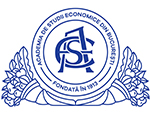Articles on Issue Theme

Ovidiu RUJAN
Academia de Studii Economice din Bucureşti
The Heckscher-Ohlin theory also did not adequately explain why rich entities such as Europe and the United States, which had very similar endowments of capital and labor, traded more intensively than those with very dissimilar endowments. While descriptive explanations of these phenomena existed, a tight theory explaining them was lacking.
Starting in 1979, Paul R. Krugman published a series of papers that successfully tackled these and many other related questions. He postulated that consumers like variety in what they consume. For the same expenditure, their satisfaction is greater if they have a larger variety of products available. This creates the incentive for firms to produce a large variety of products. But the production of a new variety has setup costs. This leads to declining per-unit costs as a larger quantity of the variety is produced and places a limit on the number of varieties the market can profitably supply. A firm produces a new variety only if it can capture a large enough market to allow profitable sales.
Countries gain from trade not only because larger market allows them to better exploit scale economies, but also because consumers can access a larger variety of products. And even identical economies can gain from trade through scale economies and a larger variety of products. The theory also brought imperfect competition into a formal trade model. The rise of the new trade theory was motivated to a large extent by the rising relative importance of exchanges of goods among advanced economies. An other finding was that the forces driving the interregional trade are the same driving international trade. These are different aspects of the economic interaction across space. This approach is known as the new economic geography.
The influence of increasing returns on trade and geography was rising up to end of the 20-th century, but in the last years the trend changed, with rapidly rising trade between rich economies and lower-wage economies. The traditional trade theory regained relevance.
In December 2008, Mr. Krugman received the Nobel Memorial Prize in Economic Sciences for 2008, honoring his work in international trade patterns.
Starting in 1979, Paul R. Krugman published a series of papers that successfully tackled these and many other related questions. He postulated that consumers like variety in what they consume. For the same expenditure, their satisfaction is greater if they have a larger variety of products available. This creates the incentive for firms to produce a large variety of products. But the production of a new variety has setup costs. This leads to declining per-unit costs as a larger quantity of the variety is produced and places a limit on the number of varieties the market can profitably supply. A firm produces a new variety only if it can capture a large enough market to allow profitable sales.
Countries gain from trade not only because larger market allows them to better exploit scale economies, but also because consumers can access a larger variety of products. And even identical economies can gain from trade through scale economies and a larger variety of products. The theory also brought imperfect competition into a formal trade model. The rise of the new trade theory was motivated to a large extent by the rising relative importance of exchanges of goods among advanced economies. An other finding was that the forces driving the interregional trade are the same driving international trade. These are different aspects of the economic interaction across space. This approach is known as the new economic geography.
The influence of increasing returns on trade and geography was rising up to end of the 20-th century, but in the last years the trend changed, with rapidly rising trade between rich economies and lower-wage economies. The traditional trade theory regained relevance.
In December 2008, Mr. Krugman received the Nobel Memorial Prize in Economic Sciences for 2008, honoring his work in international trade patterns.
ŒCONOMICA no. 4/2009
Keywords: european economic models, globalisation, increasing returns, general equilibrium models, monopolistic competition models, intra-industry specialization, inter-industry specialization, international trade theory, new trade theory, agglomeration economies, new economic geography, transport costs, concentration of production
O contribuţie a lui Paul Krugman: introducerea competiţiei imperfecte în modelul formalizat al comerţului internaţional
Select Issue:
Archive
Octavian-Dragomir JORA
Academia de Studii Economice din Bucureşti

Mara Andreea TUDOR
University of Chicago

Cătălin MURARAŞU
Academia de Studii Economice din Bucureşti

Ramona Iulia DIEACONESCU
Academia de Studii Economice din Bucureşti

Maria GHEORGHE (NIŢU)
Academia de Studii Economice din Bucureşti

Sorin-Nicolae CURCĂ
Academia Română

Revista ŒCONOMICA

Authors

